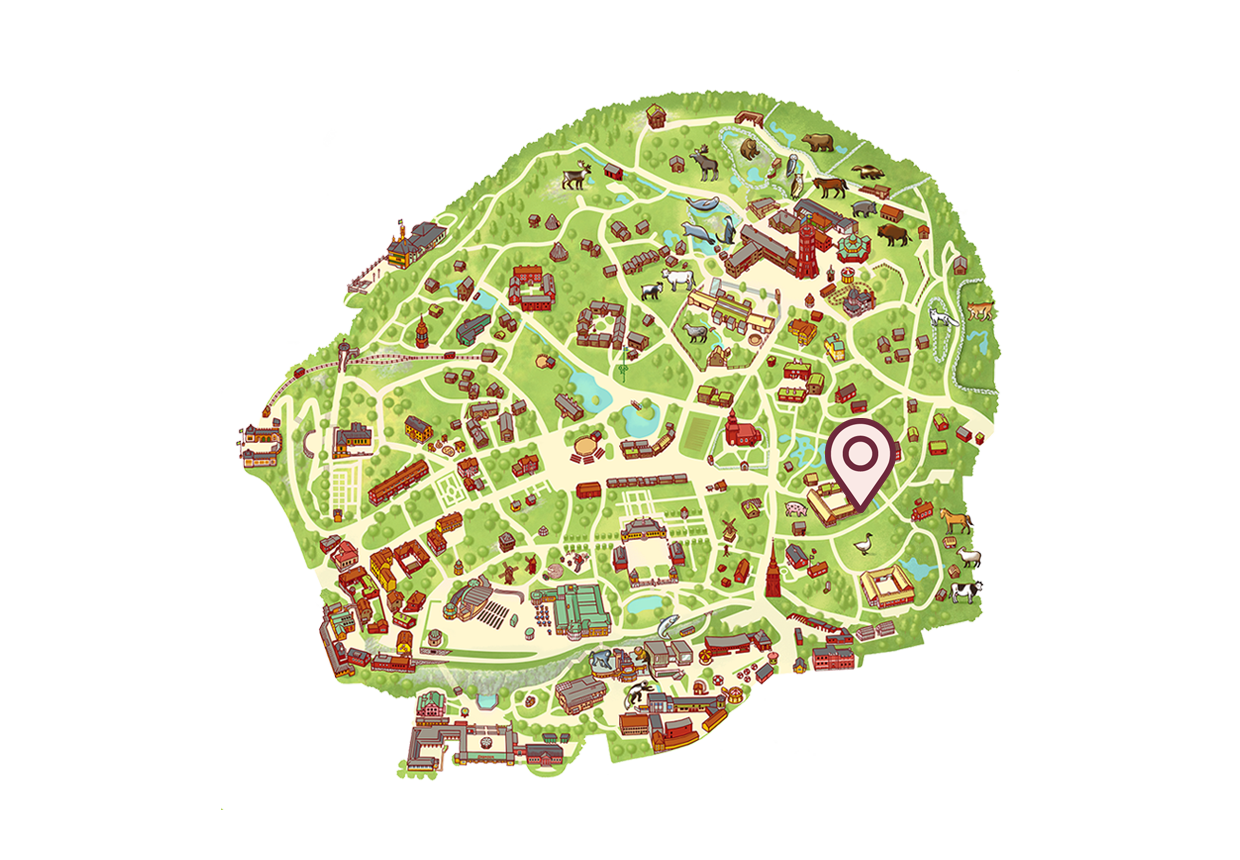- Åsen sheep
Åsen sheep
Sheep are good grazing animals and play an important role in landscape maintenance. The Åsen sheep is an endangered Swedish native breed. It is a hardy creature, and thrives on forest grazing in the summer.
-
The Åsen sheep is descended from the old forest sheep found in northern and central parts of Sweden.
-
About the Åsen sheep
Scientific name:Ovis aries domesticus
Order:Even-toed ungulates
Family:Hollow-horned animals
Weight:Female (ewe) 35–40 kg and male (ram) 50 kg
Height at the withers:Approx. 60 cm
Sexual maturity:6 months
Varies depending on access to food:Varies depending on access to food
Gestation:5 months
Number of young:1–2 kids, sometimes 3
Lifespan:Approx. 10 years
-
Short tail and small ears
Åsen sheep are small and agile, with a short tail and small ears. The rams usually have horns that can vary in size. The ewes do not have horns, but may sometimes have horn tips. Lambs are born black but can become paler with age, and some lambs can be black and white.
Just like other native breeds, different types of wool are found on the same animal. The Åsen sheep produces coarse wool, wadmal wool, smooth rya wool and fine wool. The wool is easy to work with, and is ideal for spinning and felting.
Mating depends on access to food
The ewes make good mothers, and lambs can be born at different times of the year because the ewes’ hormones depend more on access to food than on light. Ewes do not usually come into season in the summer. They are hardy creatures, and they thrive on forest grazing in the summer. Åsen sheep are said to be wise and affectionate, and can become pleasant family members and personalities.
Domestic sheep in Sweden for 5,000 years
Our native sheep breeds are probably descended from the steppe sheep, which originated in the mountains and highlands of western Asia. Domestic sheep then spread with people as they settled and began farming and herding. There have been domestic sheep in Sweden for 5,000 years.
At the time of the First World War, there were native breeds on Gotland, in Bohuslän, and from Värmland up through inner Dalarna, Härjedalen and inner Jämtland to Lapland. During the First World War, many people started keeping sheep for food. Looking after the sheep was seen as women’s work and they were poorly paid for meat and wool, so it was important that the animals did not cost anything for breeding or grazing. People wanted their domesticated animals to have several different useful qualities. When the animal was slaughtered, everything was used – including the head and the bones. Sheep provided meat and wool, as well as milk for making cheese.
Åsen sheep provided many raw materials
The different qualities of the Åsen sheep’s wool meant that materials could be obtained for different fabrics. Their skins were prepared as furskins, dehaired skins and parchment, which was used for the window panes of the time. Lanolin is an aqueous wool fat that is used as a base for ointments. In the Middle Ages, flutes were made from the shins of sheep.
The ancient native breeds survived on poorer grazing in summer and poorer fodder in winter. They were light and nimble, and could easily run among stones and rocky terrain in the forest. They were known as ‘cat sheep’ on Öland, and as ‘forest sheep’ in Värmland.
Conservation work
In 1995, the Swedish Local Sheep Breeds Association was formed to preserve what were previously
-
Native breeds
Native breeds are populations of domesticated animals that have lived for so long in the same area that they have adapted to the local environment and its specific conditions. Swedish native breeds have declined in number, but there is a growing focus on efforts to preserve them as they are an important genetic resource and part of our cultural heritage.
Find out more about Swedish native breeds here.
You can find the Åsen sheep here
